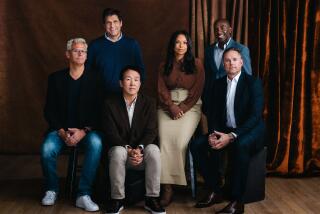Why not pull the plug on cable
Millions of Time Warner Cable subscribers deprived of CBS and Showtime have every reason to be enraged. But they should put that anger to good use.
The standoff tells us something important about the television industry. Despite urging from the Federal Communications Commission, countless angry customers and an array of elected officials, a cable operator already reviled for its skyrocketing rates can’t cut a deal with an entertainment behemoth that just trumpeted its best financial quarter ever. Perhaps if neither of them values the other enough to come to an agreement, we should ask a basic question: Is the marriage really worth saving?
Yes, we’re used to watching our network television on cable, and some of us have even gotten the drill down, knowing which buttons on which remotes will get us to what we want to watch. But we live in a time of many alternatives, and the war between Time Warner and CBS provides an impetus to explore them.
In some ways, of course, Time Warner is as much a victim of the changing times as it is a villain. At the same moment that networks and other content providers are demanding higher fees, consumers are rebelling against rising prices and alternatives to cable are multiplying. People are also rethinking how they consume entertainment, preferring to watch what they want, when they want, without regard to network or cable schedules.
I recently dumped my cable for FiOS, a fiber-optic system providing a wide array of channels (including CBS) and much-improved broadband service at about half the price. But there are many other options.
CBS has run newspaper ads encouraging viewers to switch from Time Warner to other carriers if they want to be assured of seeing the Denver Broncos play the New York Giants on Sept. 15. Satellite providers DirecTV and Dish Network are stepping up their respective efforts to lure subscribers, including the estimated 26% of the Los Angeles market served by Time Warner. DirecTV has been heavily pushing its sports packages and Dish its Hopper service, a DVR service with a lot of bells and whistles.
Most kinds of entertainment are available over the Internet through streaming services such as Hulu and Netflix, or as purchased content from Apple, Amazon and other retailers. Increasingly, people are buying streaming devices, such as Apple TV and Roku, to make television viewing via the Internet a seamless experience.
Not subscribing to a cable, satellite or telco provider does have some downsides. It means saying goodbye to ESPN and other popular networks that air things as they happen, although some news services, such as CNN, are available via the Internet.
An increasing number of consumers are trying the new technology. A recent survey by Parks Associates found that 14% of American homes now have streaming media devices, double the number in 2011. One of the industry’s most respected analysts, Craig Moffett, long skeptical of consumers’ willingness to cut the cable cord, now sees strong signs that the pace is quickening. “Cord cutting used to be a myth. It isn’t anymore,” he wrote in a recent report.
Tellingly, a major sticking point in the negotiations between Time Warner Cable and CBS was how much the cable company would pay CBS for streaming its shows. CBS, realizing where the audience is moving, wants more cash for those rights. In the meantime, CBS has made a distribution deal with Amazon to allow its hit series “Under the Dome” to be distributed on the streaming service Amazon Prime, which gives Time Warner subscribers an alternative way to watch the Stephen King thriller during the standoff.
Alternatives to cable don’t even have to involve new technology. Outlets such as Radio Shack have reported an increase in traditional antenna sales. And the controversial upstart Aereo, a sophisticated antenna service not yet available in Los Angeles, is crowing about new business spurred by the CBS-Time Warner imbroglio.
We don’t have any idea how this prolonged battle will play out. But it’s already made one thing clear: We can’t count on the combatants to have our best interests in mind. And that should be an excellent motivation to explore what else is out there. In the end, this battle of titans just might leave us with more money in our pockets and all we need on our screens.
J. Max Robins, former executive director of industry programs for the Paley Center for Media, consults and writes about the business of media and technology. Twitter: @Jmaxrobins
More to Read
A cure for the common opinion
Get thought-provoking perspectives with our weekly newsletter.
You may occasionally receive promotional content from the Los Angeles Times.










